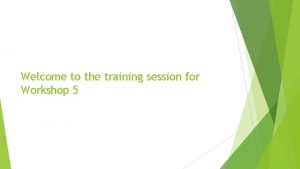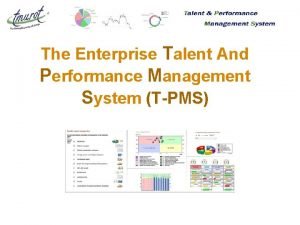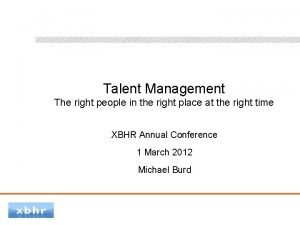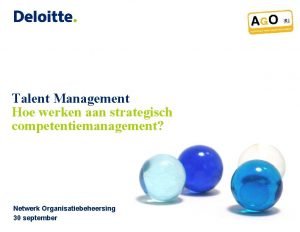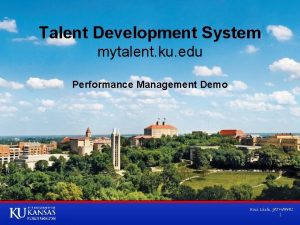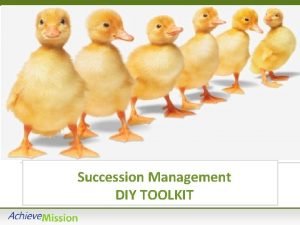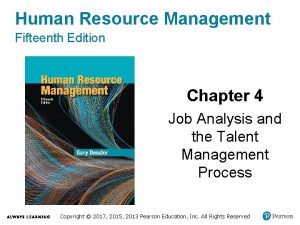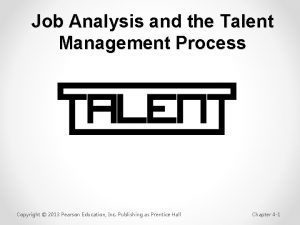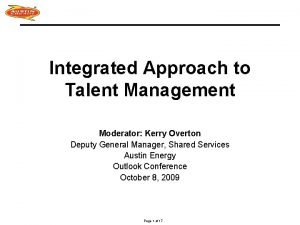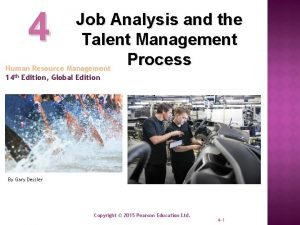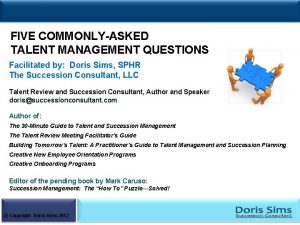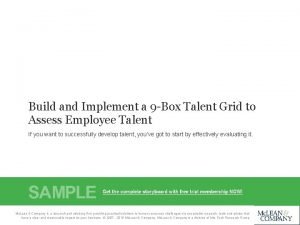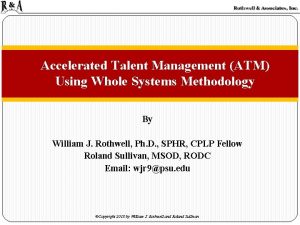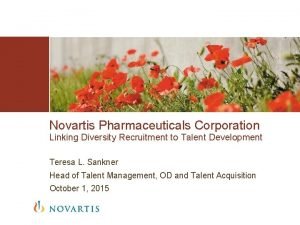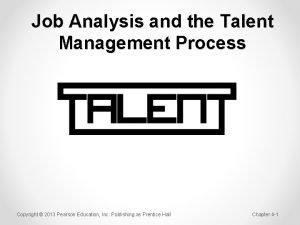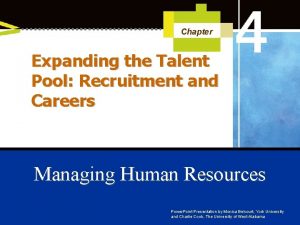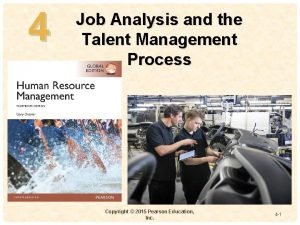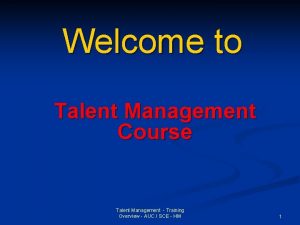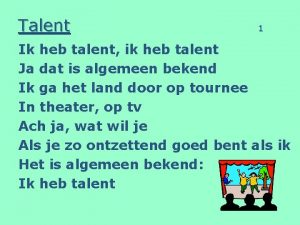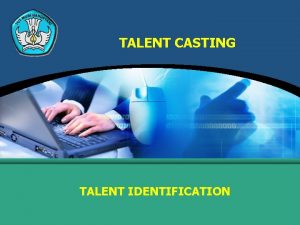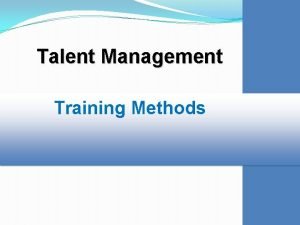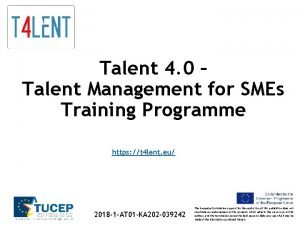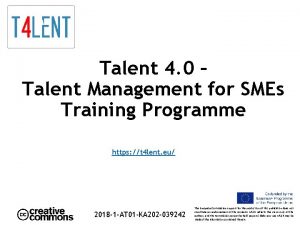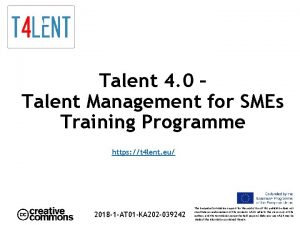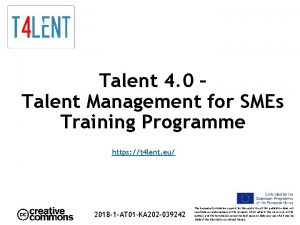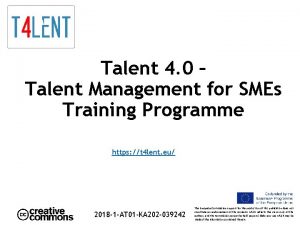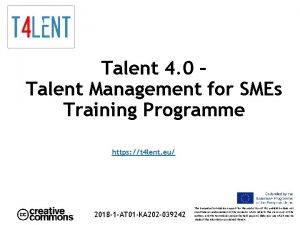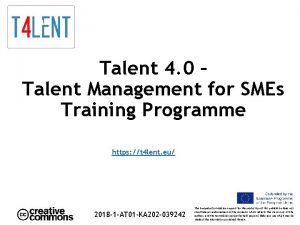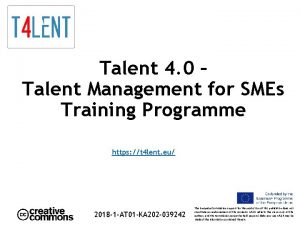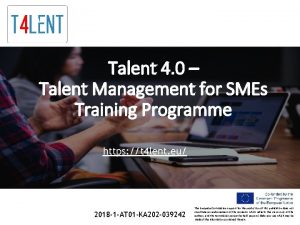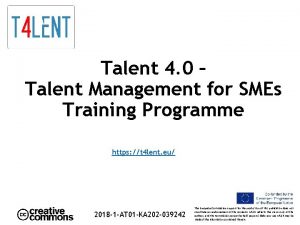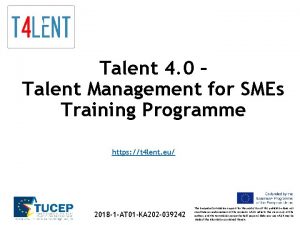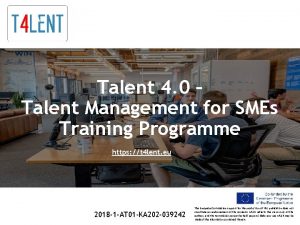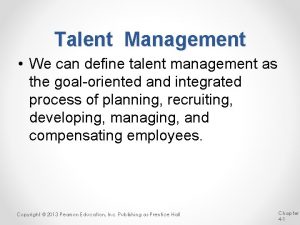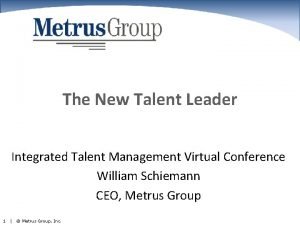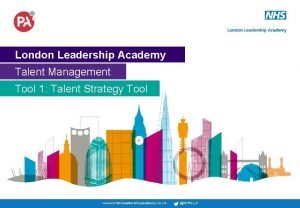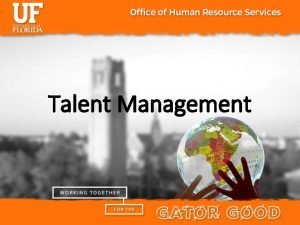Welcome to Talent Management Training Design Talent Management































- Slides: 31

Welcome to Talent Management Training Design Talent Management - Training Design AUC / SCE - HM 1

Topics of the Day n n n Introduction to the Design of Training Organizational Constraints Developing Objectives Design Theory Facilitation of learning and transfer of knowledge Talent Management - Training Design AUC / SCE - HM 2

Introduction to the Design of Training Talent Management - Training Design AUC / SCE - HM 3

Result Introduction Effective training differs from ineffective training in terms of the processes used to determine what employees need to learn and how training is designed and implemented. Talent Management - Training Design AUC / SCE - HM 4

Getting Started Effective Training differs from ineffective training in terms of the processes used to determine what employees need to learn and how training is designed and implemented. Talent Management - Training Design AUC / SCE - HM 5

Design phase of Training The Design phase of Training is a process of identifying the set of specifications that will be used in the developing phase for creating the training modules. Talent Management - Training Design AUC / SCE - HM 6

Design phase of Training The design phase answers the following questions: n Why is training needed? n Who will be trained? n What are the training objectives, and what methods will be used? Talent Management - Training Design AUC / SCE - HM 7

Design phase of Training When and where will the training take place? n What are the principles that will be used to facilitate the learning of the material and its transfer to the job? n Talent Management - Training Design AUC / SCE - HM 8

Design Phase Input Process Output Learning Theory Training Needs Develop Training Objectives Organizational Constraints Copyright c 2010 Pearson Education, Inc. Publishing as Prentice Hall Determine factors that facilitate learning & transfer Identify alternative method of instruction Evaluation objectives 5 -9

Design phase of Training Suppose that an HRD department completed a TNA that indentified that Supervisors need training in Effective Communication Skills, The next step decisions to be made include the following: n What will the training achieve? n What methods of training will be used? n How much time will be allotted for the training? Talent Management - Training Design AUC / SCE - HM 10

Design phase of Training n n How many trainees will be trained at the same time? Whether this training will be conducted on company time or over time? Whether this training will be voluntary or mandatory? Where to locate training? Talent Management - Training Design AUC / SCE - HM 11

Organizational Constraints Talent Management - Training Design AUC / SCE - HM 12

Food for Thought If the HRD department does not have the resources to develop a program, or if trainees can not be off for the time needed for training “as per the design phase”, then these factors will help shape what the training will look like and how it will be offered. Talent Management - Training Design AUC / SCE - HM 13

Organizational Constraints n Organizational / Environmental Constraints. n Trainee Population Talent Management - Training Design AUC / SCE - HM 14

Organizational / Environmental Constraints. Budgets generally are limited, so choices must be made about who gets trained and what type of training they receive. n One way of making these decisions is to use the Strategic Direction of the organization to set priorities. “ The Strategic Plan provides a rationale for determining who gets how much of what kind of training”. n Talent Management - Training Design AUC / SCE - HM 15

Organizational / Environmental Constraints. If the organization does not have a clear strategic plan in place, the top Managers of the Human Resources Department can establish priorities by meeting with Senior Executives. n Such meetings help define HR and HRD priorities and determining how to put resources inline with the direction of the company. “A side benefit is that the process might stimulate top management to engage in n Talent Management - Training Design AUC / SCE - HM 16

Organizational / Environmental Constraints. The Technological Sophistication of the organization affects the type of training that can be offered. n If there are many locations, and each location has access to Computer Networks or Video-Conferencing, the type of training you can offer will be different from that offered by an organization without these capabilities. n Talent Management - Training Design AUC / SCE - HM 17

Organizational / Environmental Constraints. Decisions about training priorities also follow the Law. As, n Some training is mandated by Law. n Some training is function of legal requirements. Talent Management - Training Design AUC / SCE - HM 18

Trainee Population What if the TNA identifies two or more groups with the same learning objectives but different levels of KSA. “ it is difficult to develop a single program to meet their needs”. n Sometimes the TNA identifies a wide variability in the KSAs of the target population. n Sometimes trainees hold negative feeling about a particular training technique. n Talent Management - Training Design AUC / SCE - HM 19

Developing Objectives Talent Management - Training Design AUC / SCE - HM 20

Developing Objectives The term Training Objectives refers to all objectives that are developed for the training program. n There are generally four types of training objectives: 1. Trainee Reaction Objectives. 2. Learning Objectives. 3. Transfer of Training Objectives. 4. Organizational Outcome Objectives. n Talent Management - Training Design AUC / SCE - HM 21

Trainee Reaction Objectives Describes the desired attitudinal and subjective evaluations of training by the trainee. Talent Management - Training Design AUC / SCE - HM 22

Learning Objectives Describes the types of: n Behavior that will demonstrate the learning, n The conditions under which the behavior must occur, n The criteria that will signify that sufficient level of learning has occurred. Talent Management - Training Design AUC / SCE - HM 23

Transfer of Training Objectives Describes the: n Job behaviors that will be affected by training, n Conditions under which those behaviors must occur, n Criteria that will signify that a sufficient transfer of learning from training to the job has occurred. Talent Management - Training Design AUC / SCE - HM 24

Organizational Outcome Objectives Describes the organizational outcomes that will be affected by the transfer of learning to the job and the criteria that will signify that organizational outcome objectives were achieved. Talent Management - Training Design AUC / SCE - HM 25

Objectives are statements about what is expected to be accomplished. A good objective has three components: 1. Desired Outcome: What should be expected to occur? 2. Conditions: under what conditions is the outcome expected to occur? 3. Standard: what criteria signify the outcome is acceptable? Talent Management - Training Design AUC / SCE - HM 26

Design Theory Talent Management - Training Design AUC / SCE - HM 27

Design Theory There are several theories related to the effective design of training, some are specific only to Cognitive Learning and others focus only on Attitude Change. Talent Management - Training Design AUC / SCE - HM 28

Comparison of Topical and Spiral Sequencing 1 of 2 Topical Sequencing Topic A Spiral Sequencing Module 1 Topic A Topic B Topic C Module 2 Module 1 Module 3 Topic B Module 1 Module 2 Module 3 Topic A Topic B Topic C Module 2

Comparison of Topical and Spiral Sequencing 2 of 2 Topic C Module 1 Topic A Topic B Module 3 Topic C Module 3 Module 2 Module 3 Topical Sequencing Copyright c 2010 Pearson Education, Inc. Publishing as Prentice Hall Spiral Sequencing

Questions Thank you, Talent Management - Training Design AUC / SCE - HM 31
 Welcome welcome this is our christmas story
Welcome welcome this is our christmas story Welcome to the training session
Welcome to the training session Enterprise talent management
Enterprise talent management Talent management wheel
Talent management wheel Vaktechnische competenties
Vaktechnische competenties Mytalent cms
Mytalent cms Talent review chart
Talent review chart Sap erp hcm performance management
Sap erp hcm performance management The pool talent management
The pool talent management Talent management scorecard
Talent management scorecard Chapter 4 job analysis and the talent management process
Chapter 4 job analysis and the talent management process Health talent management
Health talent management What do we mean by being talented
What do we mean by being talented Talent management audit
Talent management audit Infor talent management
Infor talent management Talent management process
Talent management process Kerry overton
Kerry overton Coaching careers and talent management
Coaching careers and talent management Job analysis and talent management process
Job analysis and talent management process Peak talent management
Peak talent management Talent calibration questions
Talent calibration questions 9 box talent review
9 box talent review Walks talent management
Walks talent management Civil service talent management
Civil service talent management Atm talent management
Atm talent management Talent management presentation
Talent management presentation Teresa sankner
Teresa sankner Job analysis and the talent management process
Job analysis and the talent management process Pool germany
Pool germany Job analysis and the talent management process
Job analysis and the talent management process Training is expensive without training it is more expensive
Training is expensive without training it is more expensive Metode of the job training
Metode of the job training

